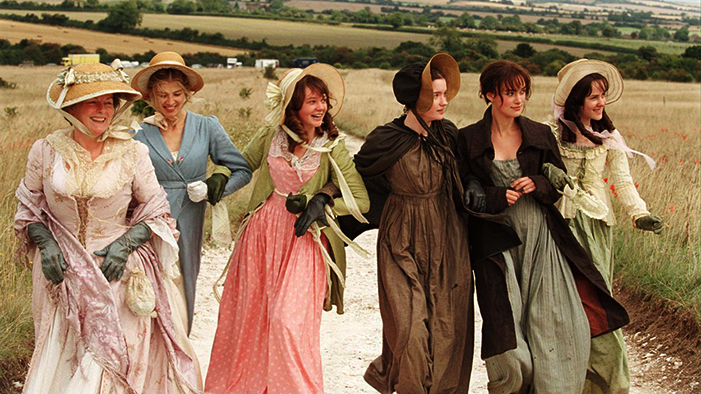Furthermore, the two leaders ushered in a society that was no longer one of rights and legal recourse, but of regimentation. Rome witnessed a real militarization of society in terms of manpower, priorities, and challenges, though Diocletian and his successor did try to keep civilian provincial administration separate from military matters, to both rationalize government and prevent generals from accumulating a threatening amount of power. That Diocletian would militarize the state is natural, given his military origin and thereby conditioned reading of the Empire's challenges. His autocracy too, and methods for implementing policies, are characteristic of his upbringing. The rigidity of his measures, such as binding peasants to the soil, in conjunction with processes already under way, such as latifundia, perhaps amplified an already emerging societal stratification; many historians have seen these measures as a creeping enserfment of peasants, and an antecedent to feudal relations. Also, such calcifying social policies suggest that the idealized 'Rome' may have begun to matter to less and less people. Of course, that both leaders increased the German element in the Army would have to mean that Rome and its traditions would be understood imperfectly by its protectors.
A fascinating question when viewing Constantine relates to his motives for embracing Christianity. The truth of his 'vision' is open to tremendous question, as the various versions were recorded by Christian apologists decades later. According to one version, while marching his forces through Gaul from Britain, he looked up at the sun and saw a symbol particular to that era's Christians emblazoned across it. Not the cross, it was called the Chi-Rho monogram, and its design is unclear to us today. Under the monogram were the words 'In this conquer', 'hoc signo vince.' In another version, he was told in a dream the night before the fateful battle at Milvian Bridge to include such a symbol on his shield. More skeptical explanations have emphasized Constantine's preexisting devotion to the cult of the sun, or that he was actually seeing the reflection of ice crystals in the sun's rays. Additionally, scholars have cited the presence of Christian mercenaries in his complement as a motive for embracing the religion. Finally, others have suggested that life as a youth in the East, where Christianity was more prevalent and acceptable, had allowed him to gain an understanding of its ideas. Whatever the truth, not only did his conversion entail the Roman order's gradual conversion, but its ramifications for the Church itself were extremely, transformatively large. As Emperor, Constantine actively took on the role of Christian arbiter in Church controversies regarding doctrine. This set up a precedent copied by Eastern Roman Emperors into and throughout the Byzantine period, both decreasing Church autonomy and absorbing perhaps too much imperial time. Further, While Christianity had previously been a minority, relatively impoverished religion, now it rather rapidly became quite wealthy; joining the Church as a functionary was suddenly a lucrative prospect. In the fourth and fifth century, this resulted in somewhat of a dilution of its spiritual vigor and message, leading to the rise of monasticism as a corrective.
Constantine's erection of a new capital was also be highly important. A Christian city, Constantinople came to inform the evolving ethos of Byzantium as a Greek civilization imbued with Christian identity, as well as serving as the hub of the continuing Roman political-legal tradition in the East.
even from the 330s, there is an evident parting of ways between the West and East. Though Constantine did not relinquish western lands, and in theory succeeding emperors of both halves were brothers-in-rule, differing political styles and decreasing military and bureaucratic capabilities allowed, and in allowing perhaps forced, the two regions to draw away from each other.
What is the overall significance of the 285-337 Roman restructuring? Several historians have idealized the Roman system of legality, rights, small peasant proprietorship, and industrious, civic-minded urban middle-class bourgeoisie topped by a senatorial class as epitomizing a self consciously Roman order based on Antiquity's balance. Such writers judged Diocletian and Constantine very harshly. The new system was indeed more rigid, and perhaps brittle, depending too much on a single leader to manage and monitor an expanded bureaucracy, military, police, informers, etc. Perhaps along with the structural change there was also something like a metamorphosis, or diminishing, of the Roman ideals in the minds of its citizens. And definitely, there was an increasing Germanization of the army, just as the state became for the first time an interested party to one's religious views.
Yet it is still more proper to view this period as earnest attempts to reinvigorate the state through transformation. The ancient core of the Empire was Italy and the Mediterranean coast cities. These were not terribly affected by the century of barbarian incursions and civil unrest. Some economic decline was evident, yet subsistence farming is quite resilient, and these regions continued as before economically, though less so culturally and politically. Moving beyond the core, to inland cities, Gaul, and more recently Romanized areas not fully integrated linguistically or culturally, the situation is more delicate. Barbarian plundering and Roman army requisitioning caused a shrinkage in town size, with the first walled towns emerging. On the one hand this can legitimately be seen as embodying insecurity and precariousness, yet we must consider that wall-building assumes privately- or senatorially-held funds; the walled cities were not without power and money. Still, economic affects of warfare and fiscal exactions by the state were harsh. Peasants were increasingly forced to sell their land to latifundia owners who would shoulder the tax burden. These mostly senatorial latifundia families would soon gather much land to themselves, hinting at later feudalism. In the fourth century, provincial wealth drained entirely to the top, and poor weather years as well as barbarian plundered harvests worsened the situation, especially since all Constantine's successors kept raising taxes.


 payment page
payment page



